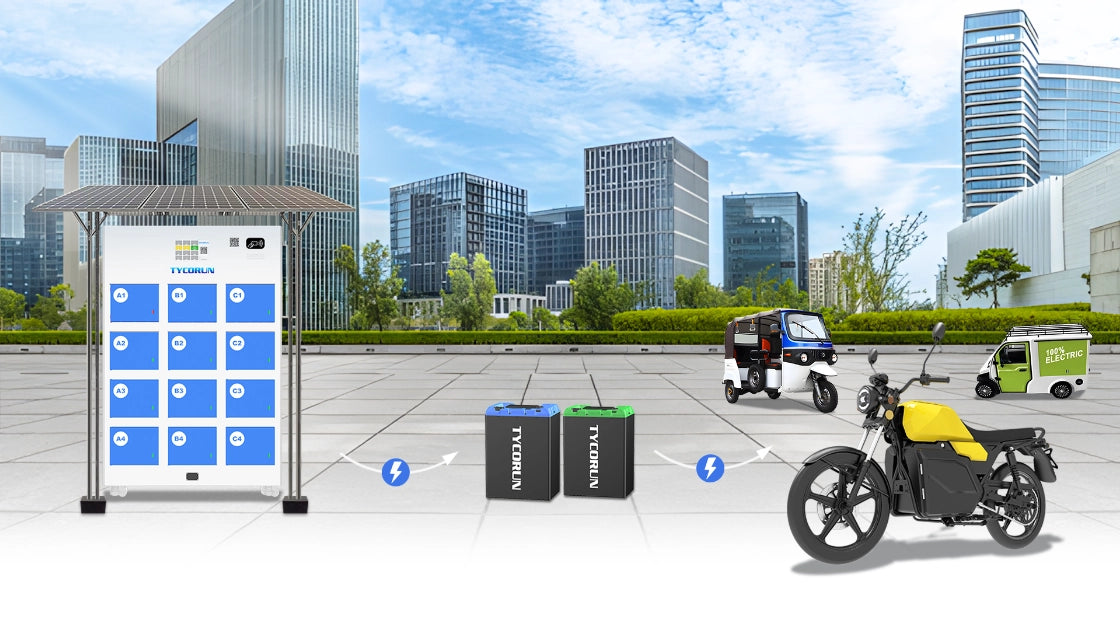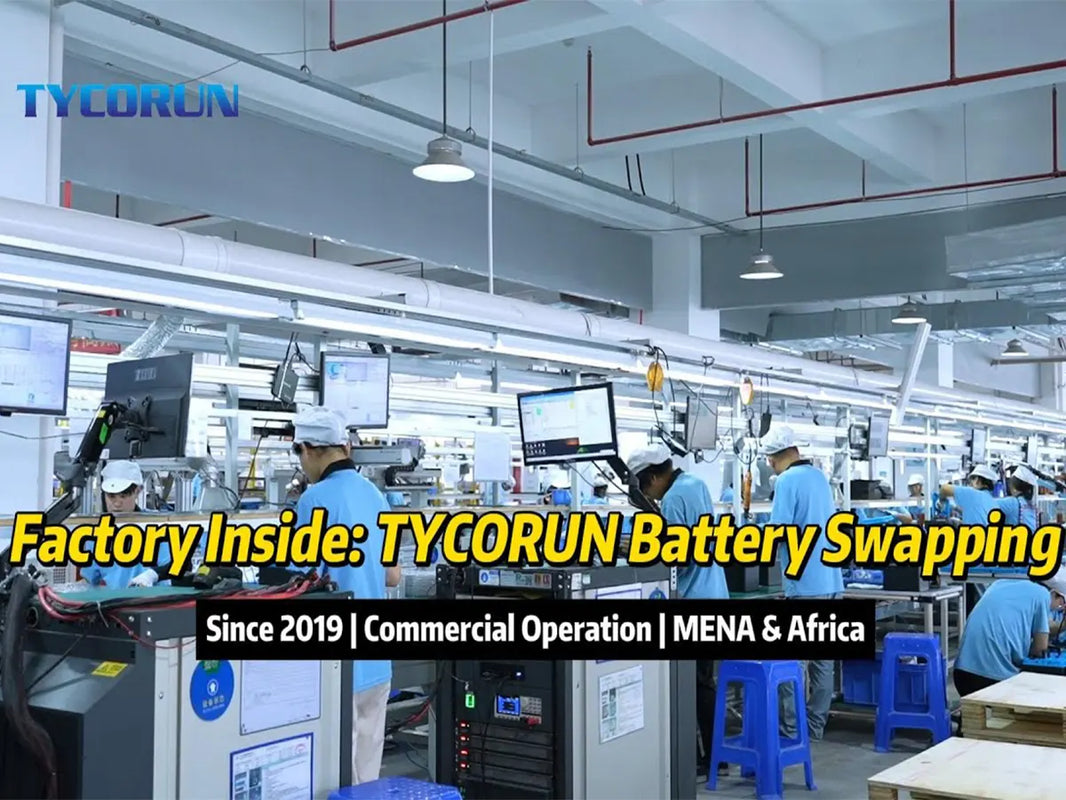
Main content:
- Basic Definition of the Electrode
- What Are the Positive and Negative Electrodes?
- Performance Requirements for Lithium Battery Cathode Materials
- Types and Characteristics of Cathode Materials
- Performance Requirements for Lithium Battery Anode Materials
- Types and Characteristics of Anode Materials
- What Is the Role of the Electrode?
- The Impact of Electrode Defects on Battery Performance
- Conclusion
Electrodes are the core of electrochemical devices. When we ask what is the role of the electrode, it is not just a conductor but the site where ions and electrons interact. At the electrode–electrolyte interface, redox reactions enable energy storage and release, making batteries, fuel cells, and electrolysis possible.
Basic Definition of the Electrode
An electrode is a conductor in a power source, electrolytic cell, or electrochemical reactor. If you wonder what is the role of the electrode, it primarily involves conducting electricity and transferring charge, while interacting with ions in the electrolyte. Common electrode materials include metals (copper, aluminum, platinum), carbon materials (graphite, carbon cloth, glassy carbon), and semiconductors (ITO transparent electrodes).
What Are the Positive and Negative Electrodes?

The meanings of "positive electrode" and "negative electrode" are not fixed; they are defined differently in different applications. To clarify, let's use a few typical scenarios.
During battery discharge, the positive electrode is the end with a higher potential, where reduction reactions occur, meaning electrons are gained; the negative electrode is the end with a lower potential, where oxidation reactions primarily occur, meaning electrons are lost. This illustrates what is the role of the electrode in practical applications, as it dictates electron flow and ion movement.
For example, in a dry cell battery, the zinc sheet is the negative electrode and manganese dioxide is the positive electrode. In a lithium-ion battery, during discharge, graphite serves as the negative electrode, and lithium ions migrate from the graphite to the positive electrode material (typically a transition metal oxide).
In an electrolytic cell, the situation is different. Because electrolysis relies on an external power source to force the reaction, the definition of electrodes is determined by the connection method of the power source. The end connected to the positive power source is called the anode (cathode and anode), where electrons are extracted, triggering an oxidation reaction; the end connected to the negative power source is called the cathode, where electrons enter the electrode, triggering a reduction reaction. In other words, in electrolysis, the distinction between positive and negative electrodes is based on the polarity of the power source, not the spontaneity of the chemical reaction.
In semiconductor devices (such as diodes and LEDs), the meanings of "positive" and "negative" are different. Here, the emphasis is on the direction of current flow: the positive electrode is the port through which current, or electrons, enter the device from the outside, while the negative electrode is the port through which current flows out. This differs from the definition of electrochemical systems.
Performance Requirements for Lithium Battery Cathode Materials
The price and performance of lithium batteries are largely determined by the quality and quantity of the positive and negative electrode materials. Cathode materials, serving as the lithium source for battery charging and discharging, are mostly intercalation compounds. Relevant requirements are as follows:
①Ensure the reversible insertion and deintercalation of large amounts of lithium +, without significant structural changes during the process;
② Have a high redox potential;
③ Have high electronic conductivity and lithium ion diffusion coefficient;
④ Good chemical stability and no reaction with the electrolyte;
⑤ Abundant resources, low price, and environmentally friendly.
Types and Characteristics of Cathode Materials
Lithium Cobalt Oxide
Advantages: Excellent electrochemical properties, processing properties, and cycle performance, with relatively high conductivity efficiency and specific capacity.
Disadvantages: High cost, toxic cobalt, which poses certain risks during use, environmentally unfriendly, and poor safety.
Applications: Small rechargeable batteries for consumer electronics.
Ternary Cathode Materials
Advantages: Good thermal stability, high energy density, relatively low production cost, and long driving range.
Disadvantages: Low density and room for improvement in cycle performance; expansion in soft-pack batteries significantly limits its application.
Applications: Powertrain (long-range passenger vehicles) and light-duty powertrain applications, and it can be a promising alternative to lithium cobalt oxide in small consumer lithium batteries.
Lithium Manganese Oxide
Advantages: Primarily spinel-type, abundant resources, low price, good safety, overcharge resistance, minimal environmental impact, non-toxic, and relatively simple industrial preparation.
Disadvantages: During charging and discharging, the unstable spinel structure can easily cause the Jahn-Teller effect (which primarily describes the geometric distortion of molecules or ions). This, coupled with the dissolution of manganese at high temperatures, can lead to a reduction in battery capacity.
Applications: Power batteries for communications, power tools/toys, electric bicycles, and electric vehicles.
Lithium Iron Phosphate
Advantages: High safety, long life, low cost, good stability, high lithium ion battery life, and mature technology.
Disadvantages: Poor conductivity and low tap density, typically only reaching 1.3-1.5. This disadvantage limits its suitability for small batteries such as mobile phone batteries.
Applications: Passenger cars, buses, logistics vehicles, low-speed electric vehicles, etc. Lithium Battery Anode Material Performance Requirements Anode materials in lithium-ion batteries are another important factor influencing battery performance.
Performance Requirements for Lithium Battery Anode Materials
① A large number of lithium vacancies, allowing for a large number of lithium ions to be inserted and removed, ensuring a high specific capacity;
② Minimum redox potential, ensuring a high output lithium-ion Battery voltage;
③ High electronic and ionic conductivity, low polarization, and good rate performance;
④ A well-structured surface, capable of forming a stable solid electrolyte interface (SEI) with the liquid electrolyte;
⑤ A large Li+ diffusion coefficient;
⑥ Minimal volume change during charge and discharge, ensuring structural stability;
⑦ Abundant resources, low price, and environmentally friendly.
Types and Characteristics of Anode Materials

Artificial Graphite
Advantages: High electronic conductivity, large lithium ion diffusion coefficient, high lithium insertion capacity and low insertion potential, safe and stable, and inexpensive.
Disadvantages: Complex manufacturing process, low production line yield, and certain safety issues in the process.
Natural Graphite
Advantages: High crystallinity, multiple insertion sites, good low-temperature performance, and good processability.
Disadvantages: Inadequate rate capability, cycling performance, and high-temperature performance.
Lithium Titanate
Advantages: Stable structure, strong reversibility, good cycling performance, fast charge and discharge, and high potential.\
Check battery discharge warning for more information.
Disadvantages: Lithium Titanate has low conductivity and poor energy density.
Silicon-Based Materials
Advantages: Abundant resources, high theoretical mass specific battery capacity, relatively low price, low discharge voltage, non-toxicity, and solvent-free co-intercalation
Disadvantages: Poor conductivity. The intercalation process causes the volume to expand several times its original size, with the maximum expansion reaching 370%. This can lead to the pulverization and shedding of active silicon, making it difficult to fully contact electrons and resulting in a rapid reduction in capacity.
Tin Metals
Advantages: Good cycling performance, high theoretical capacity (reversible discharge capacity exceeding 600 mA·h·g⁻¹), low lithium intercalation and deintercalation potentials, stable electrode structure, good safety, and abundant resources.
Disadvantages: Large volume changes during charge and discharge, poor cycling stability.
Silicon Monophosphide
Advantages: High specific capacity, enabling rapid lithium ion intercalation and diffusion kinetics.
Disadvantages: Short lifespan.
What Is the Role of the Electrode?
In various electrochemical devices, electrodes are arguably the most core component. They are more than just conductive materials; they function as a "transfer station" for energy conversion. The function of electrodes is primarily at the interface with the electrolyte, where redox reactions occur.
Simply put, electrons and ions are transferred back and forth between electrodes, converting electrical energy into chemical energy. Thanks to this process, batteries can store electrical energy and release it when needed. Similarly, technologies like electrolysis (for example, splitting water into hydrogen and oxygen), electroplating (depositing metals on surfaces), and fuel cells (converting hydrogen and oxygen into electricity) all rely on electrodes.
In the energy conversion process, electrodes perform a dual role. First, they serve as the "stage" for chemical reactions. For example, in lithium-ion batteries, lithium ions must intercalate and deintercalate between graphite layers; while in supercapacitors, redox pairs must react rapidly on the electrode surface. The electrode's specific surface area, pore structure, and surface activity directly determine the reaction rate and energy conversion efficiency. Second, electrodes serve as "channels" for electrons.
In the external circuit, electrodes are responsible for channeling electrons into and out of the circuit, forming a complete closed loop for the entire electrochemical system. Without the conductive function of electrodes, the interaction between ions and electrons cannot proceed smoothly, and electrical energy cannot be effectively released or stored.
Beyond basic reaction and conductivity functions, electrode performance is closely related to the choice of materials. For example, common negative electrode materials include graphite, silicon-based materials, and lithium metal. Graphite is widely used due to its stability, silicon is highly anticipated for its high capacity, and lithium metal is considered a key material for next-generation high-energy-density batteries.
Positive electrode materials are often transition metal oxides, lithium iron phosphate, or high-nickel ternary materials. The electrochemical properties of these materials not only determine the battery's capacity and voltage range, but also influence its cycle life, safety, and charge and discharge rates. Supercapacitors rely more heavily on high-surface-area carbon materials, such as activated carbon, carbon nanotubes, and graphene, to enable rapid charge storage and release.
Electrodes also play a role in diverse energy utilization scenarios. In electrolyzers, electrodes decompose substances, such as water electrolysis to produce hydrogen and oxygen. In fuel cells, electrodes provide an interface for the reaction between hydrogen and oxygen, enabling efficient electrical output. In these processes, electrodes serve not only as carriers for energy conversion but also as catalyst supports. Their surface properties often determine reaction efficiency and energy consumption.
The Impact of Electrode Defects on Battery Performance
Metal Contaminants
Metal contaminants in lithium-ion battery electrodes can reduce performance or cause safety risks. Understanding what is the role of the electrode helps us see why defects like these are so critical to monitor during production.
Metal contaminants in lithium-ion battery electrodes come from several sources: first, contaminated raw materials, such as Fe, Co, and other metallic foreign matter in the positive electrode material; second, metallic foreign matter, such as steel, introduced by machine wear during the slurry mixing, coating, and roller pressing processes;
Third, aluminum or copper shavings introduced during the electrode slitting process. Furthermore, growing evidence indicates that the use of recycled battery materials increases the likelihood of introducing harmful metal contaminants. Some studies have shown that the introduction of metallic foreign matter can lead to micro-short circuits and even serious safety incidents.
The effects of Fe, Cu, Al, Mg, and Si impurities on battery performance were further investigated. In the anode, Fe reduces battery capacity and causes significant irreversible lithium loss on the anode surface. Both aluminum and magnesium undergo irreversible alloying reactions with lithium, resulting in capacity loss.
The introduction of copper, in contrast, has surprisingly yielded surprising results: copper improves electrode conductivity and enhances the material's capacity. In the cathode, iron acts as a catalyst, contributing to a significant irreversible capacity. The introduction of copper can lead to a decrease in initial battery capacity, which recovers with subsequent cycles.
It is generally believed that copper from the positive electrode will eventually deposit on the anode surface, potentially causing internal short circuits and clogging of separator pores. Silicon reacts with the electrolyte to form SiO2, which then reacts with lithium to form Li2SiO3, resulting in a loss of active lithium. Experiments also revealed that some metal-contaminated batteries showed little difference from baseline batteries, indicating that the concentration of metallic foreign matter can also have varying effects on battery performance.
Point Defects
Common point defects include pinholes, dents, and bubbles. Most point defects in electrodes can be identified using micro-computed tomography, optical systems, or infrared (IR) thermal imaging. Using in situ optical observation and numerical simulations, we investigated the effect of pre-introduced point defects in graphite electrodes on lithium-ion diffusion.
We found that bubbles slow Li diffusion, leading to uneven lithiation. Furthermore, bubbles filled with electrolyte lead to faster lithiation, and the presence of bubbles can result in varying degrees of lithiation in different regions. The introduction of point defects in the positive electrode reduces the activity of the positive electrode material, significantly impacting its rate performance.
Line Defects
Line defects are primarily classified into two categories: scratches and cracks. Regarding scratches, we found that compared to defect-free cathodes, scratches do not affect the material's specific capacity in half-cells, but have a more pronounced impact on long-term cycle life. Larger defects increase the severity of the impact.
The opposite effect is observed in full cells, primarily due to localized N/P distortion. Regarding cracking during electrode drying, some researchers have studied the effects of varying degrees of cracking on high-load NMC electrodes. The results show that greater cracking severity leads to increased electrode impedance, poorer cycling performance, and lower rate capability.
Conclusion
Understanding what is the role of the electrode highlights its role as a reaction site, electron pathway, and catalyst carrier. Advances in electrode materials and design will keep improving efficiency, safety, and lifespan, driving progress in clean energy technologies.
Related articles: dry electrode, battery electrode crack, 18650 battery vs AA















